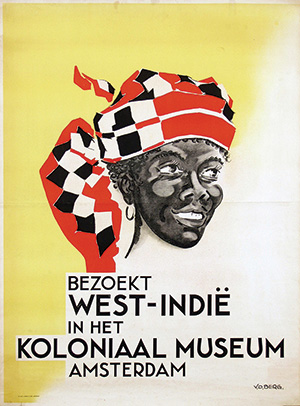
Last week, the exhibition ‘Heden van het slavernijverleden’ (‘Afterlives of Slavery’) opened in the Tropenmuseum. On the website it says that:
‘The exhibition places the enslaved and their descendants on center stage. To initiate a sometimes difficult but productive dialogue, the Tropenmuseum has sought out personal stories from past and present that bring the history of slavery and its current-day legacies up close.’
In this way the Tropenmuseum tries to show its visitors how slavery still affects our current society. What’s more interesting is that the Tropenmuseum poses that for many Dutch people, the link between the country’s historic involvement in slavery and present-day society is unclear. Therefore I’m wondering what kind of museum the Tropenmuseum really is. Is the Tropenmuseum really the foremost institute to educate the public about this historic involvement?
When you look at the Tropenmuseum, you can see it’s one of the most impressive neo-renaissance buildings of Amsterdam. The building was constructed in 1926 and was intended to accommodate the Colonial Institute and the Colonial Museum; a place where Dutch people could view the grandeur of the colonial enterprise and would be convinced of the moral obligation of the Dutch people to bring civilization to these parts of the world. Therefore its façades were richly decorated with colonial imagery and propaganda. Even now you can see the images of Asian men and women working at typically colonial industries such as the rubber trade and tobacco industry, a European man preaching from a Bible to a kneeling group of Asians, and a portrait of the infamous Jan Pieterszoon Coen, the founder of Batavia and responsible for the genocide on the Banda-islands. Quite contrary to this, it’s clear that nowadays the museum has a different purpose. How and when has the role of the Tropenmuseum in presenting Dutch colonialism changed?

Well, the transition from the colonial era to the postcolonial world did not happen overnight. And, as historian Robert Aldrich points out, that was also the case in other former colonizing countries in Europe. In ‘Colonial museums in a postcolonial Europe’, Aldrich looks at how former colonial museums in Paris, London, Brussels and Amsterdam (yes, indeed the Tropenmuseum) made the transition and shows the degree in how successful they were in doing that.
Especially interesting in this case is of course the aftermath of the independence of Indonesia. The Colonial Museum had to change its name and became the Tropenmuseum. Even though 90% of the collection was linked to colonialism, the museum tried to ‘downplay, if not efface, its colonial origin and mission.’ I think this illustrates some of the pain and the feeling of loss that was felt by the Dutch after the independence. The government played an active role in the policy of the Tropenmuseum which shows that the Dutch weren’t able to come to terms with their role in the old colonial world. Instead, curator Susan Legêne shows that from the 1960s the Tropenmuseum had to focus on the theme of international cooperation, development aid and life in the Third World. This reanimated the well-known Dutch perception of the Netherlands as ‘gidsland’; a country that guides or sets the example for other countries in terms of government policy and norms and values.
It was only as recently as 2003 that real change occurred. This was visible in the exhibition ‘Oostwaarts’ (‘Eastward Bound! Art, Culture and Colonialism’) which is now a permanent part of the collection of the Tropenmuseum. Aldrich calls it ‘the most thorough and thoughtful display on colonialism’ he has ever seen and I can only agree. Besides the display of lots of authentic items and the use of mannequins to show the audience the different lives of different people in the Dutch East-Indies, the dark side of colonialism is not avoided. In addition topics as cultural transmission and the role of women highlight the reflective nature of the exhibit.

So, only during recent years the Tropenmuseum managed to dig up and effectively display the colonial past that was already hidden in plain sight. This is to me an example of how the Dutch look at their past: only now they’ve, sometimes reluctantly, come to terms with the dark sides of history. That there is a need for the former colonized or enslaved to have their histories on display is only now recognized. I hope ‘Heden van het slavernijverleden’ will indeed confront the Dutch with the ongoing legacy of slavery in Dutch society. In this way the colonial building of the Tropenmuseum will provide the stage for a must-needed reflection on colonial history and the implications of that history today.
Tom van der Aart
For more information on the exhibition ‘Heden van het slavernijverleden’ and the opening hours of the Tropenmuseum, visit: https://tropenmuseum.nl/nl/tentoonstellingen/hedenvanhetslavernijverleden